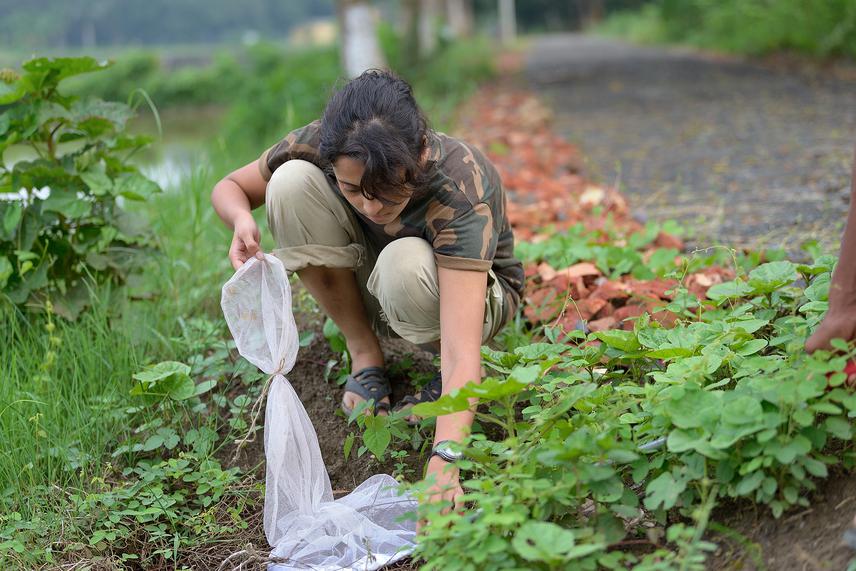- Land demand for food production always necessitates an uneasy trade-off between agricultural expansion and species conservation. This trade-off can be seen in paddy fields, where the unique combination of wet and drylands provides ideal habitat for amphibians and reptiles. Amphibians and reptiles, on the other hand, bear the brunt of crop intensification.

Herpetofauna provide ecological services.
- Herpetofauna: Cold-blooded animals such as amphibians and reptiles, collectively known as herpetofauna, provide enormous ecological services.
- As biological control agents: Frogs and toads, for example, serve as biological control agents by eating crop pests. Several salamanders and frog tadpoles feed on mosquito larvae, which aids in the control of mosquitos and mosquito-borne diseases.
- They are also efficient pollinators and help improve soil quality and aeration, as well as aid in seed dispersal and pollination. There are nearly 40 species of lizards that pollinate effectively, including skinks and geckos.
Threats to the herpetofauna
- Pesticides and fertilisers: The diversity and abundance of these herpetofauna are rapidly declining as a result of increased pesticide and fertiliser use, land conversion, cropping system changes, and a reduction in the proportion of natural vegetation.
- Agriculture and management practises are threatening 1,532 species of Anurans (frogs) and 825 species of reptiles around the world, according to the International Union for Conservation of Nature (IUCN). Agriculture and management practises are threatening 1,532 species of Anurans (frogs) and 825 species of reptiles around the world.
- They appear to be particularly threatened in India, which has a high amphibian diversity (most of which are endemic to the region) and, according to the UN Food and Agriculture Organization, had the largest cropland area over the last decade, followed by the United States and China.
- Because they are cold-blooded, amphibians and reptiles have special physiological requirements: They are extremely sensitive to microclimates and microhabitats (with a narrow range of soil humidity, moisture, light flux, acidity, air and soil temperature) (they have small habitats like grass cover and low dispersal range; maximum lifetime dispersal for frogs and toads is 12 km). As a result, they are particularly vulnerable to agricultural intensification. The researchers discovered a distinct difference in how it affects amphibians and reptiles.
Survey to learn about the effects of crop intensification
- Researchers from the University of Calcutta conducted a year-long survey of farm lands in Odisha’s Baleswar district to better understand the impact of crop intensification on herpetofauna populations and diversity.
- Paddy covers nearly 90% of the district’s 250,550 hectares of cultivable land.
Results of the Survey
- Low diversity in areas with high cropping intensity: When compared to areas with less-intensive farming, the abundance of amphibians was nearly half and their diversity was low in areas with high cropping intensity, pesticide application, and low natural vegetation.
- The difference is that amphibians are more exposed to pesticide contamination than reptiles because their skin is highly permeable and performs both respiration and water uptake.
- Species are incurring an extinction debt: According to the researchers, species are incurring an extinction debt because there is a lag between the impact of agricultural intensification on them and their response to it.
- Conflicts with humans pose a greater threat to reptiles: the true impact of current agricultural intensification on reptiles would be felt much later. Reptiles, such as snakes, face a greater threat from human conflict than amphibians. Encroachment on forest areas, as well as misconceptions and myths, lead to the indiscriminate killing of snakes, whether venomous or harmless.
- Intraguild predation: The researchers also discovered that in areas where frog population diversity is low, the number of beneficial arthropods has decreased due to intraguild predation. If both predator populations continue to decline, the natural system for controlling crop pest abundance will be disrupted.
What is mean by intraguild predation?
- A phenomenon in which multiple species feed on the same prey, causing competitors to feed on each other.
- For example, when a lion hunts and kills another predator, such as a hyena, for food.
- It occurs when two animals that are both hunters compete for the same prey.
- It’s similar to two kids fighting over a candy bar.
Way Forward
- According to the study, unless a certain number of frogs are maintained, their impacts on agriculture will be negative.
- Semi-natural and natural vegetation, as well as buffer strips such as ditches, provide opportunities to increase the number of alternate prey, intermediate hosts of target pests, and nutritional plant resources.
- Semi-natural patches benefit arthropod communities and can increase their numbers to improve crop pest control.
@the end
The researchers recommend that biodiversity research be holistic in order for more organisms to receive targeted ecological services.
Source: https://www.thehindu.com/news/national/kerala/study-reveals-unsafe-use-of-pesticides/article65758673.ece
